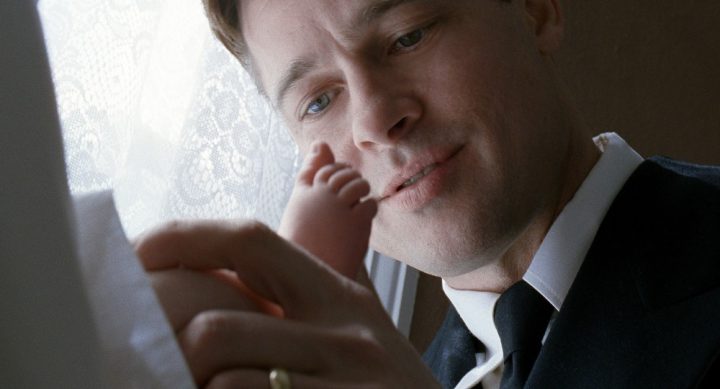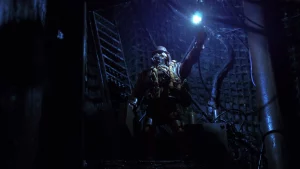
Welcome back to the Flickchart Texas BBQ Road Trip! We’re done with the Brazos Valley and heading west to a town along I-35, the highway that connects most of the major parts of the state. We get off in a small town between Austin and Waco known as Belton.
Stop #31: Belton, Miller’s Smokehouse
Belton occupies an odd spot among Texas’s cities and towns. Despite being the seat of Bell County and being part of a metro region comprising over 450,000 people, it is one of the smallest cities in the area. Some even consider Belton a suburb of Temple, itself not a huge city. Like a few areas in central Texas, evidence suggests Belton has been occupied for most recorded human history, with evidence of human habitation dating back to 6000 BC. The Tonkawa people are thought to have lived in the area for centuries, as well as a many other Native American peoples. By the 1840s most of the tribes had been pushed out, though it was still a site of occasional conflict.
White settlers came to the area in 1850. The town was named Belton in 1851, following its designation as county seat of Bell County. Belton was the largest town in the county in the late 1800s and was a major player in Texas-Union sympathies, supporting the election of Sam Houston for governor, who was a leader of anti-succession sentiment at the time. But by 1861 Bell County voted for succession, and pro-Union sympathizers faced lynching during and after the war.
Belton became an area of growth due to the Chisholm Trail cattle drive. Such growth continued throughout the century until fights for railroad spots in the area resulted in a victory for nearby Temple. Temple’s growth exploded, and Belton’s relatively more humble spot in the area became entrenched. Though Belton has experienced some of the growth and prosperity central Texas has had in the past few decades, it has remained smaller than other nearby cities. Still, Belton is a nice little town with plenty of parks and local flavor.
Belton is also home to a Top 50 BBQ spot. Opened in 2008, Miller’s Smokehouse sits on a street corner and originally began as an expansion of owner Dirk Miller’s meat-processing and taxidermy business. By the end of the 2000s he was smoking more and more meat until his reputation grew and Miller converted the entire business into a BBQ restaurant. He now serves tons of his own food, and unlike many places on the list he makes sure not sell out by mid-afternoon like most of the hottest BBQ spots. By smoking in shifts with his partner, he ensures he has food available until closing time. He even has dedicated breakfast hours.
I tried his brisket, sausage, and pork ribs. After the fantastic pork ribs of Fargo’s Pit BBQ, this was a return to a more average pork rib, though it was seasoned well enough and smoked nicely. The sausage was stronger, a jalapeño-cheese offering that sure was tasty. It could have used a slightly smokier flavor, but it still made a flavorful bite. Rather unexpectedly, Miller’s Smokehouse featured one of the strongest briskets on this journey. The brisket was sliced into tiny rectangular parts rather than long slices, but this allowed each bit to have a wonderfully marbled bark and yummy fatty flavor. The meat was tender and the pepper popped in concert with the fat to create a scrumptious bite. Definitely a must-eat brisket.
I award the brisket 4.5 slices out of 5, the pork ribs 3.5 oinks out of 5, and the sausage 4.5 links out of 5. I award Miller’s Smokehouse 4.5 smokers out of 5!
The Film: The Tree of Life
Terrence Malick‘s The Tree of Life is never given an explicit setting within the text of the film. In fact, the film becomes quite cosmic and takes place over giant stretches of time. However, Malick has spoken about how the film reflects his own childhood growing up in the nearby town of Waco. With filming taking place around the area of other nearby towns of Smithville and Bastrop, and the film clearly taking place in a small Texas town, The Tree of Life matches the character of Belton well.
Much has been written about the divisive nature of The Tree of Life. One of Malick’s most esoteric works in a career full of esoteric filmmaking, The Tree of Life chronicles the life of Jack, who grew up in small-town Texas in the 1950s. This chronicling of a story of youth with an abusive father is juxtaposed against imagery of the creation of the universe, the creation of life on Earth, and Jack reflecting back on his youth as an adult. Some have hailed the film as a masterpiece that maturely and intelligently simmers in deeper questions about the meaning of life, both on a personal and universal scale. Others have lambasted Malick’s spacey editing and criticized his reach for overextending his grasp.
I think The Tree of Life is excellent. Brad Pitt delivers a tough lead performance as Jack’s abusive father. The dichotomy of the character’s anger and love is part of the central thesis of the film. Making a character like this likable without taking away from the cruelty of the character is a tough balancing act. Pitt rises to this challenge with zeal. One wishes Sean Penn and Jessica Chastain had been offered a bit more, but they play their roles well enough.
Malick’s film is indeed a bit esoteric and sometimes hard to grasp. Long sequences that have no direct story purpose can dominate this film, and much of the thematic material derives from the filmmaking techniques themselves. If one submits to Malick’s vision, though, they will find a touching rumination on the power of human experience and its infinitely small nature in comparison to the greater universe. Humanity’s tussle with our own sense of importance and with who and what we are is encapsulated well through Sean Penn’s character.
As Roger Ebert very wisely put it, “The only other film I’ve seen with this boldness of vision is Kubrick‘s 2001: A Space Odyssey and it lacked Malick’s fierce evocation of human feeling.” The Tree of Life is a film with cosmic scope, yet it is firmly rooted in human vision and experience. His editing and use of distant shots and voiceover all give the film a universal feeling and simultaneously convey human warmth and pain.
While there are broader horizons even than Texas’s in the film, the Texan setting is a solid character in its own right and one a good prism for viewing the entire human experience. One can even imagine Belton’s BBQ spot and its local customers popping up in the background of The Tree of Life.
Does anyone eat barbecue in this film?
There might be some BBQ eaten! It’s not quite clear, but something almost looks like it!
Texas Film Chart
The Last Picture Show
No Country for Old Men
Rushmore
A Ghost Story
Blood Simple
The Tree of Life
Boyhood
Paris, Texas
The Right Stuff
Lone Star
Chef
Bernie
The Texas Chain Saw Massacre
Leadbelly
Tender Mercies
Dazed and Confused
Dallas Buyer’s Club
JFK
The Sugarland Express
The Best Little Whorehouse in Texas
Planet Terror
Frank
Whip It
Natural Selection
This is Where We Live
The Junction Boys
The Alamo
Song to Song
Outlaw Blues
Selena
Nadine
Texas BBQ Chart
Franklin Barbecue
Pinkerton’s Barbecue
Terry Black’s Barbecue
Pecan Lodge
Stiles Switch BBQ
Valentina’s Tex Mex BBQ
Hutchins Barbeque
Joseph’s Riverport Bar-B-Que
2M Smokehouse
Vera’s Backyard Bar-B-Que
La Barbecue
Hays Co. Bar-B-Que
Smolik’s Smokehouse
Louie Mueller Barbecue
Miller’s Smokehouse
Lockhart Smokehouse
Heim Barbecue
Truth Barbeque
Fargo’s Pit BBQ
Gatlin’s BBQ
City Market
Baker Boys BBQ
Kreuz Meat Market
Stanley’s Famous Pit BBQ
Micklethwait Craft Meats
Payne’s Bar-B-Q Shak
The Pit Room
Cooper’s Old Time Pit Bar-B-Que
The Smoking Oak
Heavy’s BBQ
Harris Bar-B-Que
